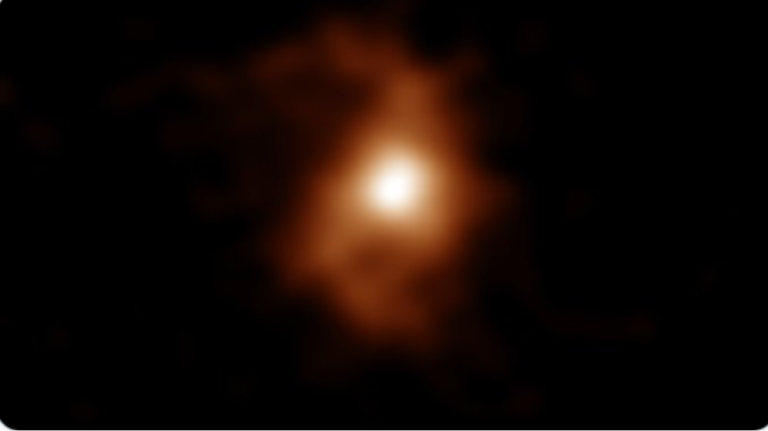New data from the Atacama Large Millimeter/submillimeter Array (ALMA) just revealed the faint shape of a galaxy with a spiral structure existing only 1.4 billion years after the big bang, according to a new study published in the journal Science. This is the most ancient galaxy of its kind ever seen.
This discovery of a galaxy with a spiral morphology at such an early universal stage is significant because it gives us a clue to an old question in cosmology: When and by what means did the first spiral galaxies form? “I was excited because I had never seen such clear evidence of a rotating disk, spiral structure, and centralized mass structure in a distant galaxy in any previous literature,” said Takafumi Tsukui, a SOKENDAI graduate student who is also lead author of the paper, in an embargoed release shared with IE. “The quality of the ALMA data was so good that I was able to see so much detail that I thought it was a nearby galaxy.”
Our galaxy, the Milky Way, is a spiral galaxy. In the modern universe, they are both populous and fundamental, constituting up to 70% of the total galaxies in the cosmos. But previous studies have suggested that the proportion of spiral galaxies reduces rapidly the farther we peer back into the ancient history of the universe. This leads to the mystery of when and how spiral galaxies first came to be. In the study, Tsukui and Satoru Iguchi, a professor at the National Astronomical Observatory of Japan and SOKENDAI, came upon a galaxy designated BRI 1335-0417, which was stored in the ALMA Science Archive. It had existed 12.4 billion years ago, and contained vast amounts of dust, which hides the starlight. This hindered astronomers’ ability to study it via visible light.
more at interestingengineering.com
also read
Two bases in Turkey attacked by ‘model aircraft’
Russian Military ad vs. ‘Woke, Emasculated’ US – ‘Holy Crap’: Sen. Cruz Reacts To Video Comparison
Ask me anything
Explore related questions





